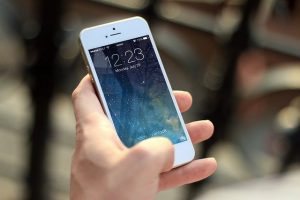 What is the measure of cell phone signal?
What is the measure of cell phone signal?
The strength of the cell phone signal is measured in decibel milliwatts (dBm). It may range between -30 dBm and -110 dBm. The closer this number is to zero, the stronger the signal. Any value bigger than -85 dBm is considered to be good.
If you look at the screen of your smartphone or mobile device, you’ll probably notice that it displays a set of bars representing the signal strength. Nonetheless, this isn’t the most accurate measure of signal strength. In fact, there’s no industry standard for what these bars represent or whether they measure 4G data transfers or 3G voice performance. This is to say that three bars of coverage on Verizon may be the equivalent of four bars on Sprint, for example. Apart from carrier differences, there are also various other parameters that influence the number of bars on your screen. Such parameters include the way you hold your phone, the manufacturers, and even your device’s activity history.
Here’s how you can use Field Test Mode for your Android-powered device on an active connection: navigate to your device’s menu (which may depend on the manufacturer, model, and Android OS version).
1. Find the “About Phone” menu item
2. Find “Network” or “Status”
3. Find “Network Type and Strength” or ” Signal Strength”
On other Android devices you may need to follow another sequence to navigate to Field Test Mode:
1. Find “Settings”
2. Go to “More Settings” or “More Options”
3. Find “About Phone”
4. Find “Mobile Networks”
5. Find “Signal Strength”
Older Android-powered devices may require the following sequence to navigate to Field Test Mode:
1. “Open Settings”
2. “General”
3. Find “About Device”
3. Choose “Status” to display the signal strength value in dBm
If none of the above methods works, you may want to check your user manual or instructions guide. You may also want to check out Play Store, as you may find some apps that can help you fetch your signal strength value. SignalCheck Lite is one of these apps.
Keep in mind that the closer the dBm value to zero, the stronger the signal. For instance, a value of -100 dBm would be a poor signal, while a -50 dBm value would account for a strong signal.
mobile phones receive the strongest signal when they are very close to cell towers. Fortunately, cell towers aren’t as far away from each other as they once were; this makes it easy to find areas with great signal strength. Nevertheless, it’s worth mentioning here that there are other factors that may affect cell signals.
What Can Block Cell Signal?
If you’re using your cell phone for a while now, chances are you’ve experienced dropped calls or unexpected system halts just when you were in the middle of writing a message. Such things may occur while driving through tunnels, riding the subway, or entering a building. One way or another, you step into the “dead zone” and you find yourself in the impossibility of using your cell phone any longer. According to Pew Research, more than 70 percent of all mobile phone users have experienced dropped calls, and 6 percent have had to put up with dropped calls multiple times per day. If you would like to know more about mobile phone signal booster then see here.
What blocks cell signals in areas with good cell tower density? Briefly, there are many things that can interfere with cell signals. Thick forests, mountains, natural barriers, but also concrete walls, steel, and certified glass windows can block even a strong cell signal.
Another thing to keep in mind is that the more the number of cell phone users increases, the more difficult it is for the networks to cope with the demand. This is a valid explanation for the lag in service you might experience at a conference, concert or another similar event where numerous people use their mobile devices simultaneously.